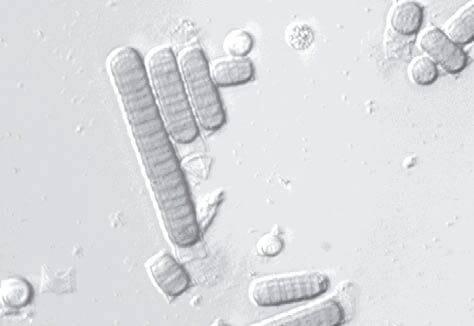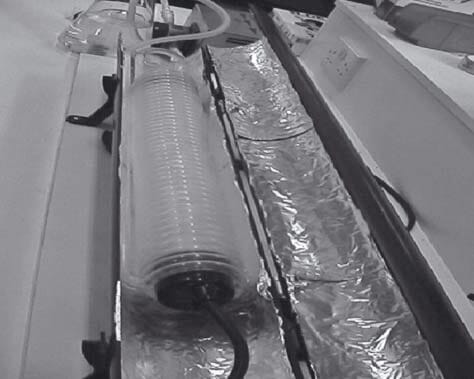While these chemicals cause no ill effects, humans can detect them at extremely low levels and it is in fact these compounds that give soil its characteristic earthy smell. The odour is linked to two compounds: geosmin (which literally means ‘smells like earth’) and 2- methylisoborneol.
These compounds have been recognised by the drinking water industry for many years and are one of the main causes of customer reported problems. These odours and tastes can be rapidly taken up by both wild and farmed fish resulting in ‘off-flavours’ or tainting of the flesh.
Problems of off-flavours have been reported around the world, adversely affecting the palatability and marketability of farmed fish. In the USA, taint problems caused by blue-green algae cost the farmed catfish industry tens of millions of dollars every year. Here in the UK, the main producers affected are in trout aquaculture, with subsequent impact on production costs and competitiveness.
Prof Lawton said her studies have confirmed that geosmin can occur in trout throughout the UK, but good quality control with the use of trained tasters can prevent tainted trout reaching the consumer. It is a seasonal problem linked to the time of year that blue-green algae grow best, i.e. summer and early autumn. The other factor that enhances algal growth is an increase in nutrients in the water, especially phosphate and nitrates which can come from domestic wastewater or agriculture.

Figure 1. Geosmin-producing blue-green algae isolated from a UK trout farm
The research also found that tainted trout can return to a marketable state by placing then in clean water and allowing the taint compounds to be depurated from the flesh. This can take anything from a few days for mildly tainted fish to over a week where a high concentration has accumulated.
Depuration of fish using borehole water, where applicable, may provide a cheap reliable method of taint removal.
However, such an alternative untainted water supply is not always available so we have explored alternative ways of destroying these nuisance compounds. Titanium dioxide is a white powder with many uses including in paints, foods (most notably it is used to write the little white ‘m’ on the popular sweets M&Ms) and cosmetics. It can also be used in water treatment because when ultraviolet light is shone on the titanium dioxide it acts as a catalyst destroying chemicals that happen to be dissolved in the water.
This was studied in the lab and it was shown that both geosmin and 2-methlyisoborneol are quickly removed from water, providing a potential solution to eliminate earthy taints from water supplies in the future. Recently, the researchers at Robert Gordon University used this technology to remove taint from water in an eel farm in Europe.

Figure 2. Treatment of water to remove earthy taint using titanium dioxide coated onto a glass coil and illuminated by UV light.
Prof Lawton said their studies have greatly improved our current understanding of earthy taints in water and farmed trout, and should enable better management strategies to deal with them in the future to be formed.
For further information on this topic you can contact: Professor Linda Lawton at L.Lawton@rgu.ac.uk
Or write to her at The Robert Gordon University, St. Andrew Street, Aberdeen AB25 1HG.
April 2008

